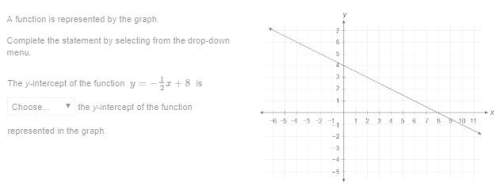
Mathematics, 13.12.2019 02:31 lololol270
Suppose there are n people in a group, each aware of a scandal no one else in the group knows about. these people communicate by telephone; when two people in the group talk, they share information about all scandals each knows about. for example, on the first call, two people share information, so by the end of the call, each of these people knows about two scandals. the gossip problem asks for g(n), the minimum number of telephone calls that are needed for all n people to learn about all the scandals. use mathematical induction to prove that g(n)< =2n-4 forn> =4.[hint: in the inductive step, have a new person call a particularperson at the start and at the end.]

Answers: 2
Another question on Mathematics


Mathematics, 21.06.2019 18:30
You were told that the amount of time lapsed between consecutive trades on the new york stock exchange followed a normal distribution with a mean of 15 seconds. you were also told that the probability that the time lapsed between two consecutive trades to fall between 16 to 17 seconds was 13%. the probability that the time lapsed between two consecutive trades would fall below 13 seconds was 7%. what is the probability that the time lapsed between two consecutive trades will be between 14 and 15 seconds?
Answers: 3

Mathematics, 21.06.2019 19:30
The cone in the diagram has the same height and base area as the prism. what is the ratio of the volume of the cone to the volume of the prism? h hl base area-b base area =b volume of cone_1 volume of prism 2 volume of cone 1 volume of prism 3 volume of cone 2 volume of prism 3 oc. od. volume of cone volume of prism e. volume of cone volume of prism 3 2
Answers: 3

Mathematics, 21.06.2019 21:30
In a test for esp (extrasensory perception), the experimenter looks at cards that are hidden from the subject. each card contains either a star, a circle, a wave, a cross or a square.(five shapes) as the experimenter looks at each of 20 cards in turn, the subject names the shape on the card. when the esp study described above discovers a subject whose performance appears to be better than guessing, the study continues at greater length. the experimenter looks at many cards bearing one of five shapes (star, square, circle, wave, and cross) in an order determined by random numbers. the subject cannot see the experimenter as he looks at each card in turn, in order to avoid any possible nonverbal clues. the answers of a subject who does not have esp should be independent observations, each with probability 1/5 of success. we record 1000 attempts. which of the following assumptions must be met in order to solve this problem? it's reasonable to assume normality 0.8(1000), 0.2(1000)%30 approximately normal 0.8(1000), 0.2(1000)% 10 approximately normal srs it is reasonable to assume the total number of cards is over 10,000 it is reasonable to assume the total number of cards is over 1000
Answers: 1
You know the right answer?
Suppose there are n people in a group, each aware of a scandal no one else in the group knows about....
Questions

Social Studies, 04.01.2021 23:40



Chemistry, 04.01.2021 23:40


Mathematics, 04.01.2021 23:40




English, 04.01.2021 23:40


Mathematics, 04.01.2021 23:40

English, 04.01.2021 23:40


Advanced Placement (AP), 04.01.2021 23:40


Biology, 04.01.2021 23:40

English, 04.01.2021 23:40





